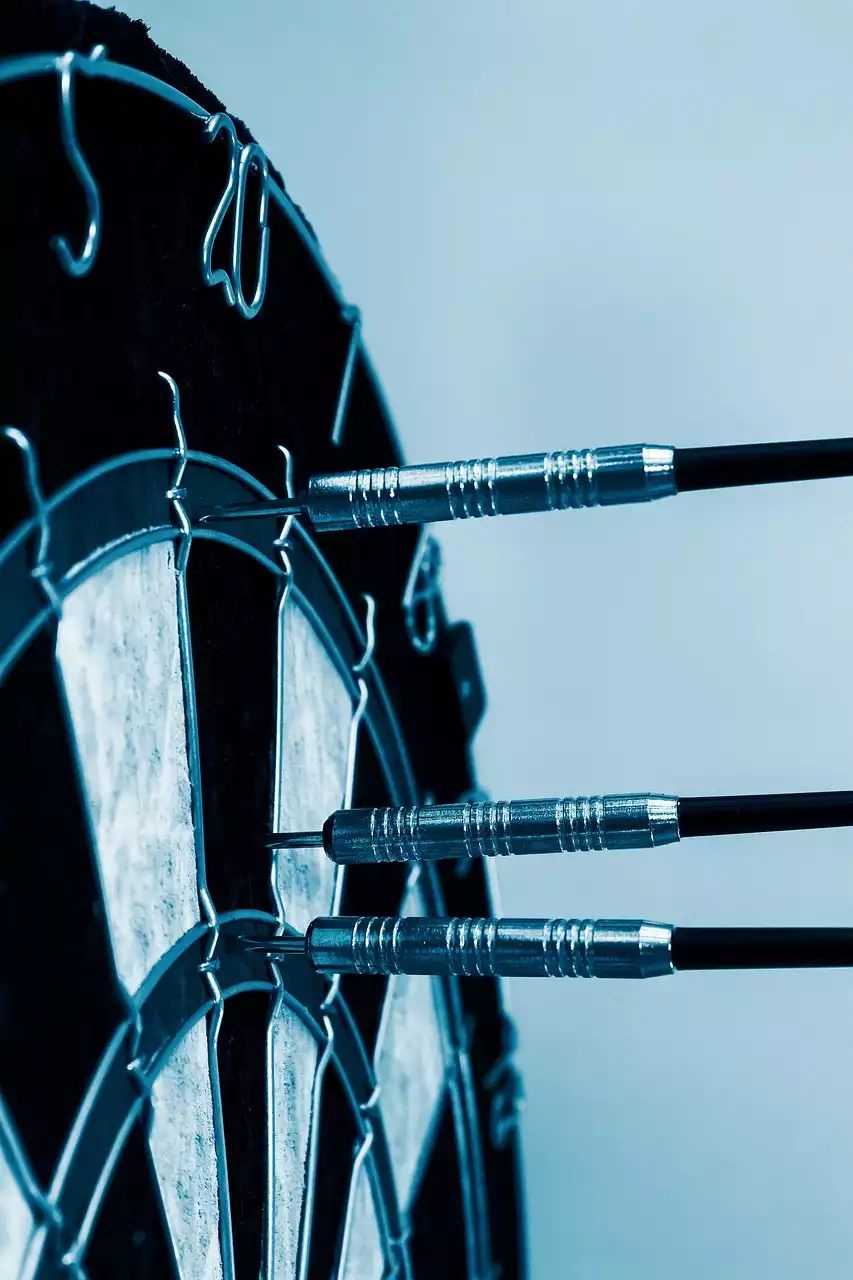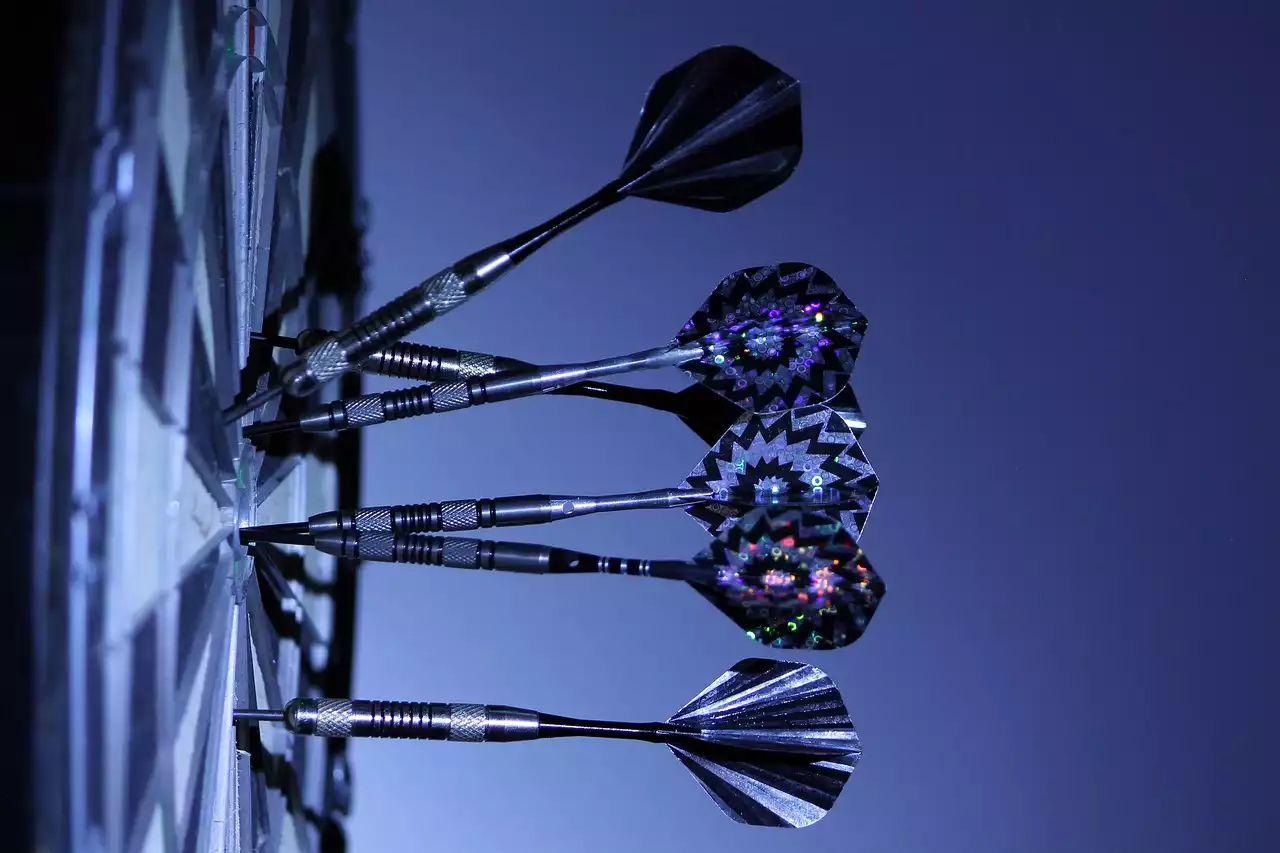Introduction
Whether you're a seasoned darts player or just starting out, choosing the right set of darts can make all the difference in your game. With so many options available on the market, it can be overwhelming to find the perfect darts that suit your playing style and skill level. That's why we've created this comprehensive guide to help you navigate through the sea of choices and make an informed decision.
In this guide, we'll explore the different types of darts, materials used, weight considerations, and various grip styles. We'll also provide tips on finding the right balance between accuracy, control, and comfort. So, whether you prefer a light and nimble dart or a heavy and powerful throw, we've got you covered. Get ready to take your dart game to the next level as we delve into the world of dart selection and equip you with the knowledge you need to make the right choice. Let's dive in!
Types of Darts - Steel Tip vs. Soft Tip
When it comes to choosing darts, the first decision you'll need to make is whether you want steel tip or soft tip darts. Steel tip darts are commonly used in traditional dartboards made of sisal fibers, while soft tip darts are designed for electronic dartboards with plastic segments. Both types have their pros and cons, and your choice will depend on where and how you plan to play.
Steel tip darts are typically heavier and have a sharper point, making them better suited for experienced players who prefer a more traditional feel. Soft tip darts, on the other hand, are lighter and have a rounded plastic tip, which is safer and more suitable for beginners, as well as for playing in environments where safety is a concern, such as a home with children.
Ultimately, the choice between steel tip and soft tip darts boils down to personal preference and the type of dartboard you'll be using. If you're unsure, it's a good idea to try out both types and see which feels more comfortable and natural in your hand. Remember, the right dart can greatly enhance your gameplay and enjoyment.
Understanding Dart Weight and Balance
Once you've decided on the type of darts you want, the next consideration is the weight. Dart weight is typically measured in grams, and the most common weights range from 18g to 26g. The weight of your darts can significantly impact your throwing technique and overall performance, so it's important to choose a weight that suits your playing style.
Heavier darts provide more stability and require a stronger throw, making them ideal for players who prefer a more powerful and controlled throw. On the other hand, lighter darts are easier to throw and allow for a faster release, making them suitable for players who prefer a more agile and quick style of play.
It's worth noting that the weight of your darts should also be balanced properly. The balance point is the location along the dart where it rests on your fingers. A well-balanced dart will allow for a smoother, more accurate throw. Experimenting with different weights and finding the right balance is essential to finding the perfect darts for you.
Dart Barrel Materials and Their Impact on Performance
The barrel of the dart is the main body that you grip and throw. It's important to consider the material of the barrel, as it can affect your grip, control, and overall performance. The three most common materials used for dart barrels are brass, tungsten, and nickel-silver.
Brass barrels are generally the most affordable option and are suitable for beginners or recreational players. They provide a good grip and are available in a variety of styles and weights. However, brass barrels may wear out faster and may not offer the same level of precision as higher-quality materials.
Tungsten barrels are favored by professional players for their durability, slim profile, and excellent balance. Tungsten is a dense material, allowing for a thinner barrel while maintaining the weight. The higher the percentage of tungsten in the barrel, the slimmer and more expensive the dart will be. A tungsten content of 80% or higher is recommended for serious players.
Nickel-silver barrels are a middle-ground option, offering a balance between affordability and performance. They provide a good grip and are suitable for players of all skill levels. Nickel-silver barrels are also resistant to corrosion, making them a durable choice.
When choosing the material for your dart barrel, consider your budget, playing style, and level of experience. Keep in mind that the material is just one factor that contributes to the overall performance of the dart.
Choosing the Right Dart Shafts
The dart shaft is the section of the dart that connects the barrel to the flight. The shaft plays a crucial role in the stability and trajectory of the dart. When choosing a dart shaft, there are a few factors to consider, including length, material, and style.
The length of the shaft can affect the flight of the dart. Longer shafts provide more stability and are generally preferred by players who have a slower throwing style. Shorter shafts offer a quicker and more direct flight, making them suitable for players with a faster throwing style. It's important to find the right balance between stability and maneuverability.
Dart shafts are typically made from nylon, aluminum, or carbon fiber. Nylon shafts are the most common and are affordable, lightweight, and durable. Aluminum shafts are slightly heavier and provide a more rigid flight path. Carbon fiber shafts are the lightest and strongest, offering maximum durability and reduced deflection.
The style of the shaft refers to the way it attaches to the barrel. The two main styles are the traditional screw-in shaft and the more modern push-in or click-in shaft. The traditional screw-in shaft provides a secure connection but may require occasional tightening. The push-in or click-in shaft offers easier and quicker replacement, making it convenient for players who like to experiment with different setups.
Consider your throwing style, preferences, and budget when choosing the right dart shaft. Experimenting with different lengths and materials can help you find the perfect combination that suits your game.
Dart Flights - Shapes, Sizes, and Materials
The dart flight is the fin-like component at the back of the dart that stabilizes its trajectory. Flights come in various shapes, sizes, and materials, each with its own effect on the flight of the dart.
The shape of the flight can affect the stability and speed of the dart. Standard flights are the most common and provide a good balance of stability and speed. Slim flights offer less resistance and are suited for players who prefer a faster throw. Pear-shaped flights provide more lift, making them suitable for players who require a higher trajectory.
The size of the flight can also impact the flight of the dart. Larger flights offer more stability and are recommended for players with a slower throwing style. Smaller flights reduce air resistance and are preferred by players with a faster throwing style.
Flights are typically made from polyester or nylon. Polyester flights are more rigid and durable, providing a consistent flight path. Nylon flights are more flexible and can absorb impact, reducing deflection. It's important to choose a flight material that suits your playing style and preferences.
Experimenting with different flight shapes, sizes, and materials can help you fine-tune your dart's flight characteristics and improve your overall accuracy and consistency.
Grip Styles and Finding the Right Dart for Your Grip
The grip of the dart refers to how you hold and control the dart during the throw. Different players have different grip styles, and finding a dart with the right grip can greatly enhance your performance.
There are various grip styles, including front-loaded, rear-loaded, and center-balanced. Front-loaded darts have more weight towards the front, allowing for a more powerful throw. Rear-loaded darts have more weight towards the back, providing a more controlled and precise throw. Center-balanced darts offer a balanced weight distribution, suitable for players who prefer a neutral grip.
To determine your grip style, hold a few different darts and see which feels most comfortable and natural in your hand. Pay attention to the grip pattern on the barrel, as it can affect the traction and control. Darts with a knurled or ringed grip offer more grip, while darts with a smoother grip provide a smoother release.
Finding the right dart for your grip is crucial for maintaining control and accuracy. Experiment with different grip styles and patterns to see which works best for you.
Considering Your Playing Style and Level of Experience
When choosing darts, it's important to consider your playing style and level of experience. Different darts are designed to cater to different playing styles, and what works for one player may not work for another.
If you're a beginner or casual player, it's generally recommended to start with a mid-range dart that offers a good balance of performance and affordability. As you gain more experience and improve your skills, you can consider upgrading to a higher-quality dart that suits your playing style.
Experienced players often have a preferred weight, grip style, and balance that they've honed over time. It's important to find darts that align with your preferences and provide the level of control and accuracy you desire.
Consider your playing style, level of experience, and goals as you explore different darts. Don't be afraid to try out different options and seek advice from fellow players or experts to help you make an informed decision.
Budget Considerations When Choosing Darts
While it's tempting to go for the most expensive darts on the market, it's important to set a budget and stick to it. Darts come in a wide range of prices, and you can find quality options at various price points.
When setting your budget, consider how often you play, your level of commitment, and your skill level. If you're a casual player or just starting out, it may not be necessary to invest in high-end darts right away. On the other hand, if you're a serious player or plan to compete in tournaments, it's worth investing in a quality set of darts that will last and perform well.
Remember that the price of the dart is not the only factor to consider. Durability, performance, and comfort are equally important. It's better to spend a little more on a dart that suits your needs than to settle for a cheaper option that doesn't perform well or doesn't feel comfortable in your hand.
Testing and Trying Out Different Darts
Choosing the right darts is a personal journey, and it often requires some trial and error. To find the perfect darts for you, it's important to test and try out different options.
Visit your local dart shop or sporting goods store and ask if they have a dartboard where you can try out different darts. Many stores also offer a variety of dart sets that you can handle and inspect before making a purchase. Take advantage of these opportunities to get a feel for different weights, grips, and styles.
If you're unable to try out darts in person, consider ordering a variety of darts online from reputable sellers that offer a return policy. This way, you can test the darts in the comfort of your own home and return or exchange them if they don't meet your expectations.
Testing and trying out different darts is an essential part of the process. It allows you to fine-tune your preferences and find the perfect darts that will elevate your game.










